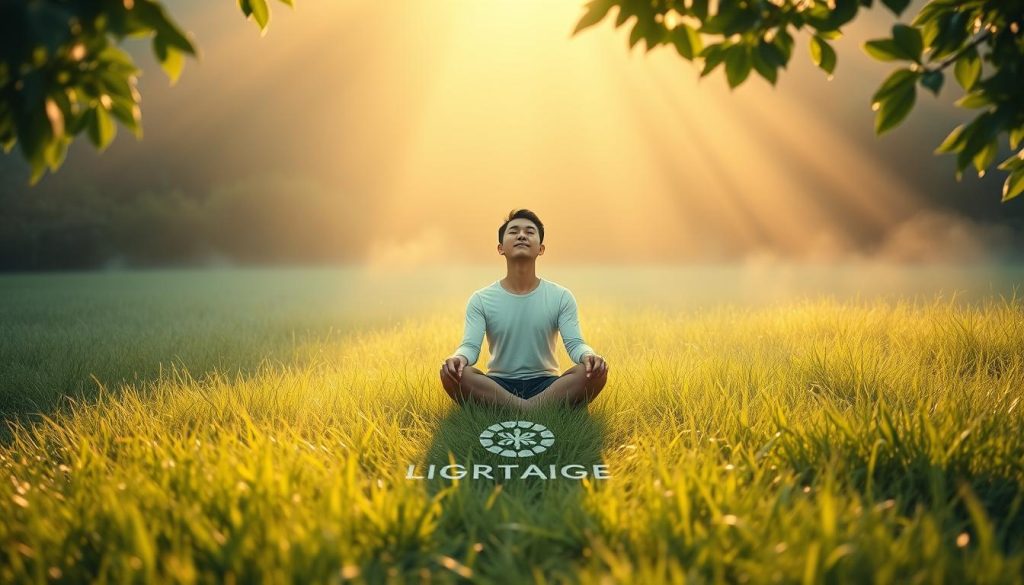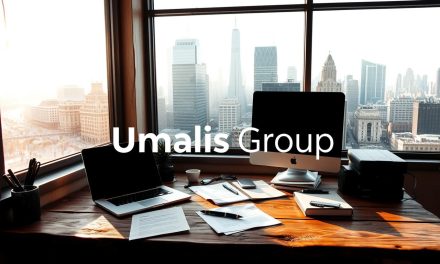We know the pressure of freelancing in France: shifting contracts, late payments, and constant decision-making. One morning, a Paris-based consultant named Claire missed a pitch because she felt overwhelmed by stress. She started a short breath practice between calls and, in weeks, noticed steadier focus and calmer judgment.
This article explains how a practical meditation plan can protect your mind and body and support long-term career stability. You will find styles from mindfulness and yoga-based movement to short resets you can use during tight schedules.
Expect research-backed benefits: lower cortisol, improved sleep, and clearer focus—simple gains that translate to steadier billable hours and fewer costly errors.
We guide you to choose the right types for your workstyle so you can build a consistent practice without overhauling your calendar.
Table of Contents
Key Takeaways
- Short, frequent practice reduces stress reactivity and supports decision-making.
- Use one-minute resets or 20-minute morning sessions to anchor your day.
- Styles like mindfulness, yoga, or mantra can fit your energy and schedule.
- Research links workplace mindfulness to lower cortisol and better sleep.
- Small habits build durable mental clarity, emotional regulation, and resilience.
- Apply methods this week to feel tangible benefits quickly.
Why Meditation Matters for Career Stability in the Present Moment
When you anchor your work in the present moment, stress loops shrink and productivity rises. This change helps you deliver reliably and protect income as an independent professional.
Stress, attention, and the path to professional independence
We see the link between short, regular practice and sharper focus. Training awareness reduces reactivity so you notice distractions and reset before time is lost.
Mind-body benefits supported by current research
Evidence connects reduced cortisol and lower blood pressure to sustained resilience. Workplace programs show improved immunity and mood, with effects on depression lasting months.
« Attention is a form of capital: protect it, and your work becomes more predictable. »
- Better sleep supports consistent decision-making.
- Emotional regulation improves client interactions.
- Across traditions and forms, awareness is the common skill that aids planning and execution.
| Outcome | Evidence | Practical tip |
|---|---|---|
| Lower cortisol | Workplace studies | Short breath resets before calls |
| Better focus | Mindfulness meditation trials | One-minute attention checks |
| Improved sleep & immunity | 2017 review & cohort data | Evening body awareness routine |
Meditation Techniques
Select a practice that matches your daily demands and energy. Short, repeatable sessions build stability for your work. There is no single right way; choose a method you will actually keep doing.
Different types include mindfulness, focused attention, movement forms (walking, qi gong, tai chi), mantra, progressive relaxation, loving-kindness, visualization, and Transcendental approaches. Each type serves a specific aim.
Choosing the right type for your needs and schedule
Match methods to goals: fast attention resets for deep work, compassion practices for client relationships, and movement for kinetic thinkers. Assess available time and energy—start with 5–10 minutes between meetings.
- Self-guided people: try breath-based or mindfulness approaches.
- Structured learners: consider teacher-led formats or guided apps.
- Quiet-focused roles: focused attention or mantra methods fit well.
- Active roles: walking meditation, tai chi, or qi gong offer movement-based entry points.
| Goal | Recommended method | Quick tip |
|---|---|---|
| Sharpen focus | Focused attention | One-minute breath counts before calls |
| Emotional balance | Loving-kindness | Two-minute compassion phrases after meetings |
| Lower arousal | Progressive relaxation | Five-minute body scan at day end |
| Kinesthetic processing | Walking or tai chi | Walk-and-breathe breaks between tasks |
Begin with one core practice and add a secondary method for high-pressure moments. Track weekly outcomes—focus, error rates, and recovery time—to validate fit and refine your meditation practice.
For wider context on personal balance and career well-being, see our personal fulfillment guide.
Mindfulness Meditation for Focus, Clarity, and Reduced Stress
We recommend a compact, repeatable approach that fits tight schedules and protects your decision-making capacity. A short breath-centered routine helps you recover attention and make clearer decisions between tasks.
Observing thoughts and sensations without judgment means noticing what arises, naming it, and returning to an anchor. Sit or stand comfortably, place attention on the breath, and simply note thoughts as « planning » or « worry » before returning to the breath.
MBSR building blocks—body scan, belly breath, and present-moment awareness—offer a reliable way to increase resilience. An 8-week MBSR program combines a full body scan with gentle movement and breath work and shows measurable psychological benefits.
Workday micro-practices to reset attention in minutes
- Use 60–180 seconds of breath awareness between tasks to lower stress spikes and restore focus.
- Before deep work, take three slow exhalations and a brief head-to-toe scan to settle the nervous system.
- In meetings, listen for one full breath before replying to reduce reactivity and increase clarity.
Anchor the routine to cues—first coffee, calendar breaks, or post-call decompressions—so the practice becomes automatic. Track task switches, time to settle into focus, and evening tension to measure progress. For faster skill acquisition, consider an 8-week MBSR course to embed habits that protect your performance and improve relaxation.
Mantra-Based Practices: From Mantra Meditation to Transcendental Meditation
A simple repeated phrase can steady the busy mind and sharpen focus before high-stakes work.
Mantra practice uses a syllable, word, or short phrase. Repetition creates gentle vibration and reduces mental noise. This builds steady concentration that helps in presentations, negotiations, and tense calls.
How repeating a word or phrase builds concentration
Choose a neutral phrase that feels natural. The aim is effortlessness: repeat without force. If thoughts intrude, return kindly to the word. Short loops—60–90 seconds—work well before meetings.
« A repeated sound gives the mind a safe anchor when pressure rises. »
Transcendental Meditation: teacher-led method and timing
Transcendental Meditation is taught one-on-one by a licensed teacher from the Maharishi tradition. The standard schedule is 20 minutes, twice daily, eyes closed. Many professionals value the clear protocol and accountability this form provides.
- For self-guided work: start with 5–10 minutes of silent repetition and track stress levels.
- For structured learning: seek a certified teacher for personalized instruction and timing.
Early studies indicate this approach may reduce burnout and improve resilience. Document outcomes—pre-call calm, steadier voice, and clearer listening—to judge fit for your workflow.
Progressive Relaxation and Body Scan to Release Tension
Targeted muscle work and a guided sensory scan restore calm faster than trying to force the mind to settle. This body-first approach helps you unwind after back-to-back calls and travel.
Progressive relaxation moves from the feet upward. You either gently tighten then release each group, or imagine a warm wave scanning the body and loosening each area in turn.
Use slow exhalations as you work. Pairing breath with movement accelerates the parasympathetic response and reduces physiological arousal.
Head-to-toe muscle relaxation for better sleep and calm
- Structured sequence: feet → calves → thighs → hips → abdomen → chest → shoulders → jaw → face.
- Option A: tense-release each area for 5–8 seconds. Option B: visualize a warm wave moving up the body.
- Ideal pre-sleep: schedule a 10–15 minute evening block to prevent racing thoughts and improve next-day focus.
- Quick reset: a 3-minute mini-scan at your desk breaks micro-tension and reduces fatigue.
| Use case | Recommended form | Quick metric to track |
|---|---|---|
| Evening unwind | 10–15 min progressive relaxation | Sleep onset time (minutes) |
| Midday reset | 3 min mini body scan | Perceived tension score (1–5) |
| Chronic pain management | Daily scan + targeted releases | Pain interference on work (weekly) |
Practical tip: log where tension collects (jaw, shoulders, lower back) and prioritize those areas. Over weeks, consistent practice shortens the time needed to relax and improves morning energy.
Loving-Kindness Meditation to Build Compassion and Resilience

Cultivating goodwill toward yourself and others strengthens professional ties and reduces defensive responses under pressure.
Loving-kindness (Metta) trains the mind to open to friendly feelings. You begin by offering short, sincere phrases to yourself. Then extend them to a mentor, a neutral contact, a difficult person, and finally to all people.
Business benefits: this form reduces reactivity, softens harsh self-criticism, and speeds recovery after setbacks. It can improve feedback conversations and calm negotiations while preserving clear boundaries.
- Use brief phrases (« May I be well ») paired with mindful breathing to stabilize attention.
- Keep wording believable and patient; your nervous system responds better to short, sincere lines.
- Practice before feedback or conflict calls to lower tension and improve listening.
Over weeks, regular practice increases compassion and kindness toward clients and colleagues. Notice changes in interpersonal tone, reduced friction, and steadier collaboration—practical outcomes that protect your independence and reputation.
Movement and Breath: Yoga, Tai Chi, and Qigong for Everyday Stress
If stillness feels impossible, short motion routines can connect your mind to the body and lower daily strain. These practical forms suit professionals who prefer embodied, active resets instead of seated practice.
Kundalini work to strengthen the nervous system
Kundalini yoga sequences combine dynamic postures, focused breath, and subtle locks to build resilience. Regular short sets improve neuromuscular integration and raise your capacity to recover between intense work sprints.
Why savasana seals the benefits
Always close a session with savasana. That brief relaxation consolidates gains and prevents carrying latent tension into your evening. We recommend 2–5 minutes of stillness after movement to let the body register the change.
Walking and other movement forms to return to presence
Tai chi, qigong, gardening, or a hallway walk pair slow motion with the breath and sharpen attention. For busy days, match steps to inhalations and exhalations and gently note sights and sounds to restore presence.
- If sitting still is difficult, choose movement-based practices to link awareness and the body.
- Start with 5–10 minutes; even short sessions reset stress baselines and sharpen clarity.
- Track outcomes: less shoulder tightness, steadier breath, clearer thinking after movement blocks.
Focused Attention and Breath Awareness to Sharpen Concentration
A short, focused anchor before work sharpens mental clarity and speeds task start-up. This form of practice trains attention using an internal cue (the breath) or an external cue (a candle, bead, or bell). If the mind wanders, you simply return to the anchor without judgment.
Use compact intervals—try 3–5 minutes before a deep work sprint. Short sessions stack across the day and produce measurable gains in concentration and start-up speed.
Counting breaths, candle gazing, and sound cues
Choose one anchor and keep it simple. Counting breaths steadies working memory. A soft chime every 60 seconds serves as a gentle recommitment without breaking flow.
- Pick a single anchor: breath, flame, or a clear sound.
- Set structured blocks (3–5 minutes) before demanding tasks.
- If thoughts arise, label them once—then return to the anchor.
- Visual thinkers may try candle gazing at eye level with relaxed facial muscles.
- Mix short movement breaks to avoid attention fatigue from sitting still.
« A reliable anchor trains the mind to return faster from distraction. »
| Anchor | Use case | Quick metric |
|---|---|---|
| Breath counting | Pre-meeting focus | Time to first deep focus (minutes) |
| Candle gazing | Visual thinkers, short resets | Re-reads per document |
| Auditory bell | Long tasks, reminders | Average uninterrupted focus (minutes) |
| Mala beads | Portable anchor between calls | Perceived clarity score (1–5) |
Over weeks, this training compounds: you’ll notice longer focus blocks, fewer re-reads, and less reliance on stimulants. We recommend tracking start-up time and error rates to validate the impact on your professional performance.
Visualization and Spiritual Traditions: Inspiration, Values, and Meaning

Visualizing outcomes and drawing on contemplative paths helps you hold purpose during busy work cycles. We recommend short, vivid sessions that prime motivation and align action.
Use imagery to pre-experience success: see milestones, hear client appreciation, and feel calm readiness. Multisensory detail—sights, sounds, touch—makes the image more compelling and strengthens neural priming for long projects.
Spiritual forms such as Christian contemplative prayer or Sufi dhikr add depth. These traditions orient values, reduce burnout risk, and give work a stronger moral frame. Choose what resonates and keep practice simple.
- Anchor imagery to realistic next steps (draft proposal, lead workshop) so inspiration becomes execution.
- Include a compassion element: imagine stakeholders benefiting to increase purpose and ethical clarity.
- Keep sessions short and finish with one concrete step to advance the vision.
| Use | Method | Quick metric |
|---|---|---|
| Pre-meeting calm | 1–3 min visualization | Perceived readiness (1–5) |
| Long-project motivation | Weekly multisensory rehearsal | Progress milestones met (%) |
| Values alignment | Contemplative prayer or dhikr | Sense of meaning (1–5) |
| Rapport & focus | Brief image + compassion element | Meeting clarity score |
« Pre-experiencing success trains the mind to act with calm and clarity. »
Other Types to Explore: Zen, Vipassana, Chakra, and Sound Bath
We suggest adding a complementary practice to broaden your resilience toolbox. These other types offer distinct ways to steady attention, manage performance anxiety, and restore energy.
Zen sitting emphasizes upright posture and a belly-centered breath. Sit alert, follow the inhale and exhale, and allow the mind to « just be. » This form suits leaders who need calm presence in meetings.
Vipassana: insight and perspective
Vipassana trains clear observation of change, non-self, and impermanence. Regular practice reduces attachment to outcomes and eases performance anxiety. Long retreats help deepen insight; short silent sittings work too.
Chakra work and sound-based relaxation
Chakra balancing scans energy centers with breath and focused attention to restore equilibrium. Combine this with slow breath and a two-minute journal note to turn somatic signals into action plans.
Sound baths use bowls and gongs to produce resonant tones that quickly lower arousal. If you respond to sensory cues, these sessions can deactivate stress chemistry fast.
- Choose long-form silence (Zen, Vipassana) for deep training.
- Choose sensory forms (sound baths, chakra) if you prefer guided cues.
- Seek a teacher when trying advanced forms to avoid common pitfalls.
« Experiment in low-stakes settings, then add a weekly long session that complements your daily core routine. »
Getting Started Today: Time, Guidance, and Safe Practice
Begin simply and protect your capacity like any other professional resource. Start with five minutes each morning and add a two-minute reset between demanding work blocks. Consistency matters more than long sessions; small, reliable steps build durable attention and relaxation.
One practical rule: if you feel « too busy, » that is the best time to give yourself a short pause — a proverb with a wink that actually works.
Begin with five minutes and build consistency
Start with 5–10 minutes daily and keep one micro-reset per work block. Log start time, duration, method, and how you feel after each session to track benefits and patterns.
When to use teachers, apps, or guided sessions
Choose structure when you need accountability. Live teachers, recorded sessions, apps, and courses like MBSR give clear progression and reduce risk of feeling unsettled. Unwanted effects are uncommon (about 4.2–4.6%) and usually mild. They appear more with high-frequency solo practice; group formats and qualified guidance lower that risk.
- Pick a core practice you enjoy — breath work, a short mantra, or gentle yoga — so you keep going.
- Schedule practice like a client meeting; protect that time in your calendar.
- Stay safe: shorten sessions if you feel destabilized and seek group or professional support.
« Start small, track progress, and treat practice as a professional habit. »
Conclusion
Small, repeatable habits are the most powerful way to reduce stress and protect your professional output. Choose one core practice you will keep, and add one short supportive method for high-pressure moments. Enjoying the moment helps the mind and body integrate gains more quickly.
Prioritize consistency: short daily sessions plus micro-resets before calls or after tasks will lower tension, speed focus onset, and improve client-facing presence. Mix breath work, brief yoga or walking, and a compassion-based pause to cover different needs.
Practical next step: pick one form and schedule five minutes today. Track sleep, error rates, and calm between calls to measure impact. If you want structure, consider teacher-led options like transcendental meditation or group MBSR; if you need flexibility, keep it self-guided and kind.
FAQ
What types of practices help reduce work-related stress and improve attention?
Short, regular sessions of breath awareness, body-scan relaxation, and focused-attention practices are effective. These approaches calm the nervous system, lower physiological arousal, and train your ability to sustain attention during busy workdays. Combining micro-practices (1–10 minutes) with a daily longer session builds resilience and reduces reactivity to stressors.
How can these methods support a stable independent career?
Regular practice improves decision-making, emotional regulation, and sustained focus—skills essential for independent professionals. By increasing clarity and reducing burnout risk, you better manage client work, deadlines, and transitions, enhancing long-term stability and professional confidence.
What is a body scan and how does it help with tension and sleep?
A body scan guides attention systematically from head to toe, noticing sensations and releasing tension. It lowers muscle tightness and mental rumination, which helps you wind down at night and improves sleep quality when practiced before bedtime.
How do mantra-based practices and Transcendental Meditation differ?
Mantra practices use repetition of a word or phrase to anchor attention and build concentration. Transcendental Meditation uses a personalized mantra taught by a certified teacher with a structured twice-daily schedule. Both support calm focus, but TM involves formal instruction and a standardized method.
Can brief practices during the workday really reset my focus?
Yes. Micro-practices—such as 1–5 minutes of breath counting, a short body scan, or mindful walking—interrupt rumination and restore cognitive resources. These quick resets increase productivity and reduce stress without disrupting your schedule.
Are movement-based practices like yoga, Tai Chi, or Qigong beneficial for professional stress?
Absolutely. Gentle movement synchronized with breath regulates the autonomic nervous system, reduces tension, and improves posture and energy. Practices like Kundalini yoga can strengthen the nervous system, while savasana consolidates benefits by promoting deep relaxation.
What is Loving-Kindness practice and why is it useful at work?
Loving-Kindness cultivates positive intentions toward oneself and others through repeated phrases of goodwill. It increases empathy, reduces social threat responses, and builds resilience, which improves team interactions and client relationships.
How do focused-attention exercises like breath counting or candle gazing sharpen concentration?
These exercises train the brain to return to a chosen object when distracted. Repeated redirection strengthens attentional control, reduces mind-wandering, and enhances the ability to sustain effortful cognitive tasks common in freelance and entrepreneurial work.
What role do visualization and spiritual practices play in professional motivation?
Positive imagery and values-based contemplation clarify goals, reinforce purpose, and elevate mood. For some, contemplative traditions—such as prayer or dhikr—provide meaning and moral grounding that support ethical decision-making and long-term motivation.
How should a beginner start safely and build a consistent routine?
Begin with five minutes daily of a simple practice—breath awareness or a short body scan—and increase gradually. Use guided sessions, trusted apps, or a qualified teacher for technique and safety. Consistency matters more than duration; aim for daily practice and adjust to your schedule.
When is professional guidance recommended?
Seek a qualified teacher or clinician if you experience intensified anxiety, disturbing memories, or strong emotional reactions during practice. Professional guidance is also helpful when learning specialized methods like Transcendental Meditation or therapeutic mindfulness programs (for example, MBSR).
Which forms are best for quick emotional regulation before a client meeting?
Short breath-awareness (4–6 slow breaths), a 60–90 second body-scan of shoulders and jaw, or a simple loving-kindness phrase can quickly reduce arousal and center attention before important interactions.
Are sound-based methods like chanting or sound baths effective for relaxation?
Yes. Chanting and sound baths use vibration and rhythm to entrain calm states, reduce stress markers, and promote relaxation. They can complement other practices for deeper restorative effects, especially after intense work periods.
How do Zen and Vipassana approaches differ for someone seeking insight and presence?
Zen emphasizes sitting practice and “just being” with posture and breath, cultivating immediate presence. Vipassana focuses on clear observation of sensations and the impermanent nature of experience, fostering insight into habits and reactivity. Both enhance awareness but with different emphases and training formats.





